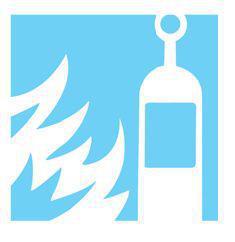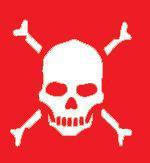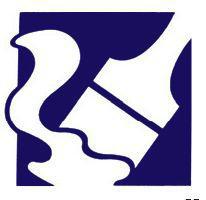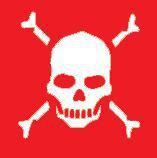SAS Urban Survival Handbook (33 page)
Read SAS Urban Survival Handbook Online
Authors: John Wiseman
Tags: #Health & Fitness, #Reference, #Survival, #Fiction, #Safety, #Self-Help, #Personal & Practical Guides, #General, #Survival Skills

If pruning, you may kill a tree by leaving gaping wounds for diseases and rot to set in. The tree may become dangerous in later years.
If the tree is within 10 m (33 ft) of a house, it may be affecting the foundations. Removal of the tree can also cause damage, although the effects may not be apparent for a few years. Consult a specialist.
SOLDERING/BRAZING
Most domestic soldering consists of making small joins in electrical work, using small soldering irons, or making soldered (capillary) joints for plumbing. A larger soldering iron or a propane torch may be hired for joining sheet metal. There are obvious dangers from the heat—burns and fires are a constant risk—but the materials involved are also highly toxic. Good ventilation is essential to avoid breathing fumes. When judging the fire hazard, typical temperatures involved in ordinary soldering with tin-and-lead solder are 175-250° C (347-482° F), while brazing (which tends to use copper-and-zinc solder) requires temperatures of 700-900° C ( 1292-1652° F).
Solders
Most solders contain a combination of potentially toxic metals. Brass, copper, lead, zinc, tin and pewter are common. Do not handle excessively. NEVER inhale the fumes of molten solder.
Fluxes
Fluxes, which allow the solder to flow, are intended to ‘cut through’ oxides on the metal to make a good firm join. They are poisonous and corrosive. Do NOT breathe the fumes they produce. Wear barrier cream or disposable gloves. If any flux does get on your skin—use a good skin cleanser. The flux for brazing is usually a borax paste—which is often the main constituent of ant-killer! Enough said.
WELDING
Welding is only required if a strong join is needed. It’s really a job for professionals, but many people hire welding equipment for repairs to cars, gates and grilles. It isn’t something you do well the first time you try and great risks are involved.
Solders are not usually employed—instead, the point of contact between two metal surfaces (usually steel-to-steel or aluminium-to-aluminium) is heated until they ‘melt together’. Extra metal—a filler—may be melted into or onto the joint.
You need a lot of concentration and a lot of control. Welds go wrong in lots of ways. DON’T rely on a welded joint (for example, on a car or a child’s swing) unless you know what you are doing. If the temperature is too high, you may melt too much metal or make a hole. Too low and the join might break. Take a class in welding to give you an idea of what’s involved.
Gas welding
Gas welding involves cylinders of oxygen and acetylene, which are mixed within a torch. In some cases, butane or propane are mixed with oxygen instead. Great care must be taken with all the cylinders. They should NEVER be handled or stored carelessly. DON’T knock or tamper with the valves or gauges.

EMERGENCY!
HOT ACETYLENE CYLINDER
- ►
If the acetylene cylinder is exposed to heat Take outside as quickly/carefully as possible - ►
Close the valve tightly/Take off regulator Cool the cylinder with water
WHEN IT HAS COOLED DOWN
Open the valve and release all the gas
IF UNCERTAIN
Move the cylinder to a people-free area, cool it/Call the fire brigade for advice
In practice, acetylene is always lit BEFORE the oxygen is turned on. And don’t forget:
- ◑ Do not use too great a flame.
- ◑ Don’t touch the flame, it is extremely hot.
- ◑ Don’t point the flame at anyone or anything apart from the workpiece itself.
- ◑ Clamp all work firmly in position.
- ◑ Wear safety gear—this is VITAL.
- ◑ Try to avoid having any part of your body beneath the weld site—molten metal may fall on you.
- ◑ Keep the hoses AWAY from the heat.

WARNING
Oxygen: Fires will start and burn more easily in oxygen-rich air. Never smoke, make sparks or use a naked flame near stored cylinders.
Acetylene: It is very flammable. It can react with some metals to produce an explosion. Never replace any of the fittings on the cylinder or improvise connections on hoses or torch. If an acetylene cylinder is exposed to heat follow the emergency steps above.
CYLINDER SAFETY
- ■
Handle cylinders with great care - ■
Store cylinders away from dust and debris, which might prevent a valve from closing properly - ■
Clean all threads—but do NOT grease them or use a jointing compound before making connections - ■
Don’t allow children anywhere near the cylinders - ■
Avoid long hoses—there is more of them to be damaged - ■
Blue hoses should be used for oxygen, red for acetylene - ■
NEVER attempt to mix two or more gases in a cylinder—or to transfer gas from one cylinder to another - ■
Acetylene must be stored UPRIGHT - ■
Don’t subject cylinders to extreme temperatures—hot or cold. Keep out of sunlight. DON’T smoke/have naked flames near cylinder
Arc welding
Although ‘arc’ welders commonly plug into a 13-amp socket, a transformer reduces the voltages BUT steps up the rate of flow of the current (amps) to a point when an intense spark or ‘arc’ may be formed. The immense local heat causes two metal surfaces to fuse together.
The transformer has two leads (apart from the mains lead)—one is attached to the electrode holder which you use to make the weld, the other is the earth connection which completes the circuit. The latter must be attached to the workpiece.
An arc is formed when you touch the electrode holder to the workpiece, great heat is generated and the tip of the electrode melts and flows into the joint. You MUST observe all instructions on earthing equipment and insulation.
Safety gear
Welding produces intense light and you will need a whole-face visor which is filtered to protect your skin—AND YOUR SIGHT. Apart from visible light, infra-red and ultra-violet are produced. These can cause severe eye burn, deep sunburn, skin ‘cancers’ and headaches.
You should cover as much skin as possible—with clothing which does not let light through. Wear several layers. Professional welders use leather aprons and gauntlets. Greasy clothes increase the risk of fire. Don’t wear man-made fibres. They may melt. Heavy boots are also needed to avoid burns from droplets of molten metal.
Ventilate the area well and use breathing protection. The fumes which are produced during welding are poisonous—often extremely so.
PAINT
 One of the simplest DIY jobs that many people undertake is decorating their own home. At least, it always LOOKS simple when other people do it! Like any job you do around the home, it won’t look any good if you don’t prepare well beforehand and address any problems before you start. You need to plan the work, estimate the cost of and buy materials—and be sure you have a good strong stepladder before starting. NEVER balance on chairs, stools or boxes.
One of the simplest DIY jobs that many people undertake is decorating their own home. At least, it always LOOKS simple when other people do it! Like any job you do around the home, it won’t look any good if you don’t prepare well beforehand and address any problems before you start. You need to plan the work, estimate the cost of and buy materials—and be sure you have a good strong stepladder before starting. NEVER balance on chairs, stools or boxes.

WARNING
Many of the chemicals with which you will come into close contact may be toxic. Stripping paint is a hazardous process—however you do it. Rubbing down old paint may be particularly hazardous—many old paints contained lead. Lead was still used as an additive in paints into the 1980s. In some countries, lead may still be used. Protect your skin and wear a facemask. Wash well after exposure—lead is very toxic.
NEVER rub down any surface you suspect is made of or contains asbestos. Wallboards and insulating/fireproof panels may be asbestos sheet. Even textured wall and ceiling coatings used to contain it (see SAFE AS HOUSES?: Asbestos).
Emulsion paint
Most (water-based) emulsion pa ints for domestic use have fairly low toxicity. Lead is no longer used as an additive (in most countries). DON’T use any paint you suspect of containing lead, especially where children may come into contact with the painted surface. DON’T buy ‘cheap’ paints that do not have a recognized brand name. Be wary of bright-coloured paints—they may contain all sorts of additives. See if the instructions give a hint as to their toxicity.
All paints you use should either state that they are NON-TOXIC, or clearly state any recommended precautions that you must take.
Ensure good ventilation while painting, while the paint is drying—and for a couple of days afterwards. Don’t sleep in a newly-painted room for a night or so. In warmer months, paint dries a lot faster—and ventilation is easier.
Some people are more sensitive to paint fumes (even from emulsion paint), and should take extra care to ensure good ventilation. Skin contact should be avoided.
Paints containing fungicide are toxic. It may NOT be essential for you to use such a paint, unless you have a problem with damp or mould.
‘Gloss’ paints
Gloss and other oil-based paints contain solvents, which are poisonous. Gloves should be worn—and a mask. You should not smoke or use naked flames around solvents, nor around these paints until they are dry. Ventilation is vital. Children or pets may be much more susceptible to the effects of the fumes.
If you feel dizzy or nauseous, you are not ensuring a good supply of clean air. Open doors and windows to the room and go outside until you feel better.
Paint accidents
If you get any sort of paint at all on your skin, wash it off at once. This is easy with emulsion, if you don’t wait. With gloss, or other oil/solvent-based paints, wipe away any excess at once—without spreading it further. Use a household detergent (washing-up liquid would do), without water at first. Rub this into the paint to dissolve it and rinse well with warm water. Hot water will open the pores of the skin, and may force the paint to dry faster and become sticky. If possible, buy a good skin cleaner before you start painting.
DON’T
use paint thinners, white spirit, turps, petrol or any ‘solvent’ on your skin.